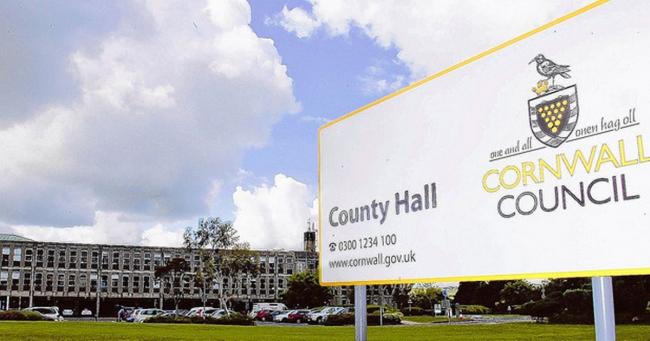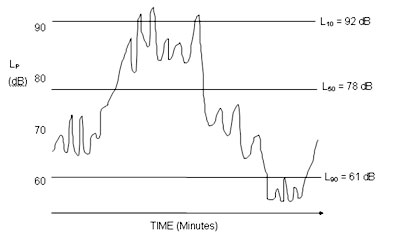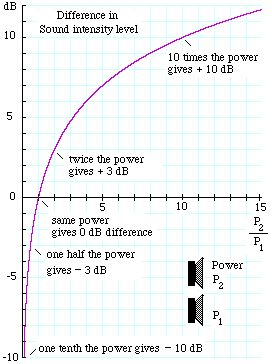
https://www.google.co.uk/search?q=county+hall+cornwall+images&rlz=1C1ARAB_enGB463GB464&tbm=isch&tbo=u&source=univ&sa=X&ved=2ahUKEwj7xcSHzcncAhWoCsAKHQAVCTQQ7Al6BAgCEA0&biw=1280&bih=891#imgrc=HGi6feHHFhZQxM:
Objectors to the proposed Penzance Heliport have argued the 'WYG' noise report commissioned by the applicants is partisan and misleading. If Cornwall Council rely on it for their decision making, it risks another Judicial Review!
A decision is due to be made at the next Strategic Planning Committee on the 2nd August, 2018 when Planning Officials are recommending approval. This follows a briefing by the applicant (Tresco Estates) and 'WYG' to local Councillors at which objectors were allowed to observe but not speak, and a packed public meeting, both hastily called on the 23rd July 2018 and not previously programmed.
The fact that Councillors at the briefing were only presented with the applicant's arguments in favour of the scheme, is further evidence of a biased approach to the issue by Cornwall Council, prepared to ditch all national and local guidelines in order to approve it.
The noise report completed in early 2018 but based on noise reading taken in the summer of 2016 from just fifteen sites, with later amendments and additions, claims that the noise from the helicopter operations will have "no significant impact" on environmental noise levels or nuisance to those affected by them.
It generally derides any suggestion that the noise generated could have any physical or psychological consequences for the people who live in the vicinity or under its flight path, despite academic studies to the contrary. Nor has anyone quantified the adverse effect on property valuations that are linked to a noisy environment.
On the presumption that "whoever pays the piper calls the tune" the 'WYG' is, and always has been, partial, as its own report admits by stating, "this report is submitted in support of the application". Assurances that it is carried out by scientists with high professional standards, is insufficient to provide assurance of impartiality, without independent oversight and verification.
Cornwall Council has not commissioned any independent study, despite authoritative reports pointing to the weaknesses and unreliability of the 'WYG' conclusions and methodology. This could render it vulnerable to a further Judicial Review were it pursued by objectors.
It would be naive of Cornwall Council, in its eagerness to approve the scheme, to accept the 'WYG' submission without corroborative evidence, that effectively a deafeningly loud machine, will not be heard or cause disturbance, in quiet semi-rural and residential locations.
It is one thing to approve a scheme in the full knowledge of true impact, quite another to base it upon false or misleading information because the figures and calculations have been 'tweeked' or manipulated in one form or another.
This has been achieved in several subtle ways that may not be immediately noticeable to the untrained eye. WYG's whole argument for an absence of impact, is based on the difference between existing noise background and the additional noise created by helicopter operations.
Clearly it would not be in the applicant's interests to show low background noise readings, and conversely advantageous to show them as higher. This is what they have achieved.
Selective choice of measuring sites
Fifteen sites were chosen for long-term (LT) and short-term (ST) readings. These appear not to have chosen randomly but predominantly for their noisy locations near main or local roads.
LT1 Adj. to Gulval Nursery (Adjoining Long Lane)
LT2 Adj. to Poniou Farm (Adjoining very noisy by-pass)
LT3 Adj. to 59 Godolphin Road (150 yds S. of by-pass)
LT4 Rear Sainsbury's Supermarket (between 2 arterial routes)
LT5 East of Marazion Marsh (Adj. railway line)
LT6 Newtown Lane, Marazion. (Adj. busy feeder road)
The ST sites were as follows:
ST1 Jct Ouay Street/The Quay (Major arterial road)
ST2 Jct PenareRd/Castle Rd (busy juction on hill)
ST3 Jct Posses Lane/Jelbert Way (very busy juction)
ST4 Gulval Churchtown adj. to road on hill
ST5 Tolver (relatively quiet location with unexplained peaks)
ST 6 Adj. Poniou Farm (replicating LT2 and affected by Long Rock bypass noise)
ST7 Chy an Mor (adj. to arterial road and roundabout and close to railway)
ST8 Adj. to 48 Darlington Rd. (Again close to Long Rock bypass)
ST9 Marazion Marsh (adj. to mainline railway)
Despite having drawn this to the attention of the noise experts, no effort has been made to adjust this basic weakness and unrepresentative sampling on which all other projections and calculations were based.
As a result WYG conclude that the calculated background noise level is over 55 dBA when the more realistic figure for sites away from busy roads would probably be ten or more decibels less - e.g. <45 dBA . Obviously this is supportive of the hugely distorted picture that the helicopter is not much louder than background.
Selective use of noise measuring units
The next method employed to give the impression of marginal impact is the choice of noise measuring unit, namely the 'Leq' rather than units such as the L90 which is the standard unit in assessing industrial noise BS4142. The definition of these units is given in the Appendix.
The impact of the measuring unit is significant on what is considered to be the 'background' noise measurement. Predictably WYG choose to use the unit most favourable to their argument that the additional noise will not be significant.
For example at the Poniou sampling point (LT2) close to the very noisy concrete Long Rock Bypass, the difference tends to be marginal but still significant with L90 figures 2.9 - 7.8dB lower than the Leq.
At other sites the difference is even greater. For example at Tolver (ST5) the L90 is lower than the Leq by the far more significant range of 2.3 -18.9 dB with some very dubious peak measurements for a very quiet location.
Not once in 258 readings, was this general rule reversed.
It can immediately seen how the choice of Leq over L90 has had a beneficial consequence for playing up the background noise environment and playing down the additional noise from the helicopter. This is highly significant in asserting incorrectly that at its worst, the helicopter will only contribute 8.5dBA to background levels.
Selective manipulation of the source helicopter noise
Leqs are also used in the prediction of the helicopter noise. As we have noted this is an average figure over a specified time period. It is therefore much lower than the actual peak noise generated. This obviously has huge consequence for any conclusions drawn.
Put another way, any hearer does not hear an average noise level but an actual one as the helicopter flies over, lands or takes off. The souce noise is in the region of 100 dBA which is literally 'deafening'. The noise observed is dependent on many factors but principally distance where it conforms to the physical inverse square rule, i.e. halves as the distance doubles.
The nuisance value of the noise however is largely dependent on the difference the new noise appears above the background or ambient level. Anything over 10dBA is regarded as substantiating nuisance. I am quite confident that for the majority of properties in the vicinity of the heliport or immediately under its flight path, this level will be exceeded.
If by using the Leq unit the source noise is played down and the background noise is played up, it is easy to see how the false conclusion can be reached that the noise will not be intrusive.
Noise loading not included in calculations
It is generally agreed because of its impulsive nature, helicopter noise is intrinsically more annoying. For this reason all academic and technical research recommends that in any theoretical calculation for nuisance, the actual noise should be loaded. This figure is variously 6 to 15dBA. As far as I am aware the WYG report made no attempt to follow this recommendation so again underplays the likely impact.
Planning and Noise Statutory Guidelines
It comes as no surprise that it can make the figures fit into parameters imposed by the National Planning Policy Framework 2012 (updated 2018) on which any decision will inevitably be judged.
https://www.gov.uk/guidance/national-planning-policy-framework
Paragraph 123 from the above document states:
Planning policies and decisions should aim to:
- avoid noise from giving rise to significant adverse impacts4 on health and quality of life as a result of new development
- mitigate and reduce to a minimum other adverse impacts on health and quality of life arising from noise from new development, including through the use of conditions
- recognise that development will often create some noise and existing businesses wanting to develop in continuance of their business should not have unreasonable restrictions put on them because of changes in nearby land uses since they were established5
- identify and protect areas of tranquillity which have remained relatively undisturbed by noise and are prized for their recreational and amenity value for this reason
124. Planning policies should sustain compliance with and contribute towards EU limit values or national objectives for pollutants, taking into account the presence of Air Quality Management Areas and the cumulative impacts on air quality from individual sites in local areas. Planning decisions should ensure that any new development in Air Quality Management Areas is consistent with the local air quality action plan.
The following is taken from: https://www.gov.uk/guidance/noise--2
How to determine the noise impact?
Local planning authorities’ plan-making and decision taking should take account of the acoustic environment and in doing so consider:
- whether or not a significant adverse effect is occurring or likely to occur;
- whether or not an adverse effect is occurring or likely to occur; and
- whether or not a good standard of amenity can be achieved.
In line with the Explanatory note of the noise policy statement for England, this would include identifying whether the overall effect of the noise exposure (including the impact during the construction phase wherever applicable) is, or would be, above or below the significant observed adverse effect level and the lowest observed adverse effect level for the given situation. As noise is a complex technical issue, it may be appropriate to seek experienced specialist assistance when applying this policy.
I would contend that if carried out properly, the noise investigation would show the development should not be permitted.
A Noise need not be considered as a determining factor in granting planning permission, although the noise level at the high end of the category should not be regarded as a desirable level.
B Noise should be taken into account when determining planning applications and, where appropriate, conditions imposed to ensure an adequate level of protection against noise.
C Planning permission should not normally be granted. Where it is considered that permission should be given, for example because there are no alternative quieter sites available, conditions should be imposed to ensure a commensurate level of protection against noise.
D Planning permission should normally be refused.
A recent Times article states authoritatively that property situated in a National Park benefits from a premium of 50 - 100% simply because it provides assurance of peace and restricted development.
Research has indicated that environmental noise does have a negative impact on property valuation. It depends not only on the noise intensity to which dwellings are exposed but also on the nature of the noise source.
The greater and more frequent the noise the greater the adverse consequences. See:
https://www.sciencedirect.com/science/article/pii/S038611121400020X
Conclusion
For all these reasons the 'WYG' report is seriously deficient.
- It enhances background level by careful choice of monitoring sites and by ignoring the background L90 figures.
- It down-plays the helicopter noise by using only Leq units.
- It fails to load the the predicted noise output in accordance with research recommendations.
- At the very least it should have supplemented them with actual or linear peak figures set against L90 background noise measured away from other sources of traffic noise for comparative purposes and for a much more accurate reflection of likely impact.
- The resultant projections are therefore misleading and should not be relied upon to ensure compliance with National Planning Policy Framework, statutory guidelines.
Appendix:
See also
http://veaterecosan.blogspot.com/2018/06/second-submission-by-tim-veater.html where the subject is treated in greater detail.
Noise units and definitions
"Equivalent continuous sound level describes sound levels that vary over time, resulting in a single decibel value which takes into account the total sound energy over the period of time of interest. Sound levels often fluctuate over a wide range with time. For example in the middle of the night the level might go down as low as 30dB(A) with occasional passing vehicles of 70dB(A) or more.
The meter faithfully follows all the fluctuations, stores them in it's memory and at the end of the measurement calculates an 'average energy' or Leq value."
L90:
"L90 is taken to be the ambient or background noise level as used, for example, in BS 4142 ‘Rating Industrial Noise Affecting Mixed Residential and Industrial Areas’."

Decibel:

Adverse effect of noise on property valuation summarised here:
M. Getzner, D. ZakHealth Impacts of Noise Pollution Around Airports: Economic Valuation and Transferability. Environmental Health - Emerging Issues and Practice
Prof. Jacques Oosthuizen (Ed.), 978-953-307-854-0 (2012)
InTech. Retrieved from http://www.intechopen.com/books/environmental-health-emerging-issues-and-practice/health-impacts-of-noise-pollution-around-airports-economic-valuation-and-transferability.
https://cornwall.public-i.tv/core/portal/webcast_interactive/365888
REPRESENTATIONS IGNORED!
On the 1st August, 2018 the following letter was sent to the Chairman of the Strategic Planning Committee and others giving further particulars as to why the noise report submitted 'in support of the application' could not be relied upon.
At no point have I had a reply to this, not even an acknowledgement! More importantly, the criticisms of the methodology adopted by the acoustic experts employed ('WYG') appear not even to have been considered. If they have been, it was certainly not referred to in the committee's public deliberations.
Apart from the basic discourtesy, this surely demonstrates that a fixed view had been adopted that brooked no dissent and there was contempt for any suggestion that noise and pollution were genuine issues to even be taken into account.
This was not an aberration. An earlier report dated 28th June, 2018 (reproduced here: http://veaterecosan.blogspot.com/2018/06/will-penzance-heliport-lift-off-httpswww.html ) forwarded to every member of the same committee did not elicit a reply from even one !
As a result we must assume these important issues have never received an independent assessment or been properly considered or refuted by the Cornwall Council, other than WYG reiterating they consider their report's conclusions to be 'robust'. The conditions imposed, do not even impose noise or pollution criteria or prevent Sunday flights.
I take this to be validation of my objections and the fact that the approval was made intentionally ignoring the true noise and pollution implications. What use are central and local written policy documents, if they are to be so flippantly disregarded?
30th August, 2018.
Rob Nolan, Esq.,
Chairman of the Strategic Planning Committee (and others)
Dear Cllr Nolan,
Re. Proposed Heliport, Penzance.
It appears that at tomorrow's (Thursday 2nd August, 2018) meeting of the Strategic Planning Committee (SPC), the application for a new heliport and its operations in Penzance, will be recommended for approval. This despite the fact that it runs counter to a number of relevant Council and Government policies.
The recent (23.7.2018) and rather belated public meeting in St John's Hall, was a vindication of local efforts to discuss the impact of the proposals. Up to that point it appeared to be a very one-sided affair, lacking any real consultation or discussion of the implications for the local environment. Illustrative of this, is the fact that the earlier semi-private briefing heard only from the applicants. Their noise and other reports, appeared to go virtually unchallenged. Little or no opportunity has been afforded those critical of the methodology or conclusions, to present their case to the same degree.
One of the problems is that in respect of noise, too much implicit faith and reliance, has been placed on the applicant's noise predictions. These are intrinsically unreliable and misleading. The Council has failed to obtain an independent assessment and so renders itself liable to another Judicial Review. It is one thing to make a Planning judgement based on unchallenged raw material, quite another to rely on subtly manipulated figures to produce a desired outcome.
A detailed critique of the WYG Noise Report and justification for the view that it provides a partisan and inaccurate picture of the likely impact, is provided here http://veaterecosan.blogspot.com/2018/07/penzance-heliport-could-noise-report.html and here http://veaterecosan.blogspot.com/2018/06/second-submission-by-tim-veater.html
I would respectfully suggest that if, as seems likely, the SPC does approve the application tomorrow, the conditions it imposes should be no less stringent, than those in force for the previous BIH operation or for helicopter operations on the Isles of Scilly, where Sunday flights are not permitted and the flight 'window' is shorter. It would be clearly inequitable to expect Penzance people to be subjected to nuisance on days or at times, from which Scillonians were protected.
I am sure you would agree that if the Cornwall Council (CC) thinks construction noise on a Sunday is unacceptable, it would be irrational not to treat noisy flights on that day in the same way, especially as helicopter noise is far more intrusive! To subject local residents to noise and smell, even on a Sunday, would be unconscionable and a failure of the Council's duty of care to its rate-payers.
I sincerely hope that the CC will take serious regard of the reservations expressed, both verbally and in written form, and at least modify the approval, to ensure local householders are properly protected, from what is an intrinsically environmentally damaging and unnecessary proposal.
Yours faithfully,
Tim Veater.
c.c. Cllr John Thomas; Geoff Wild, Head of Legal Services; Phil Mason, Head of Planning.
No comments:
Post a Comment
Note: only a member of this blog may post a comment.